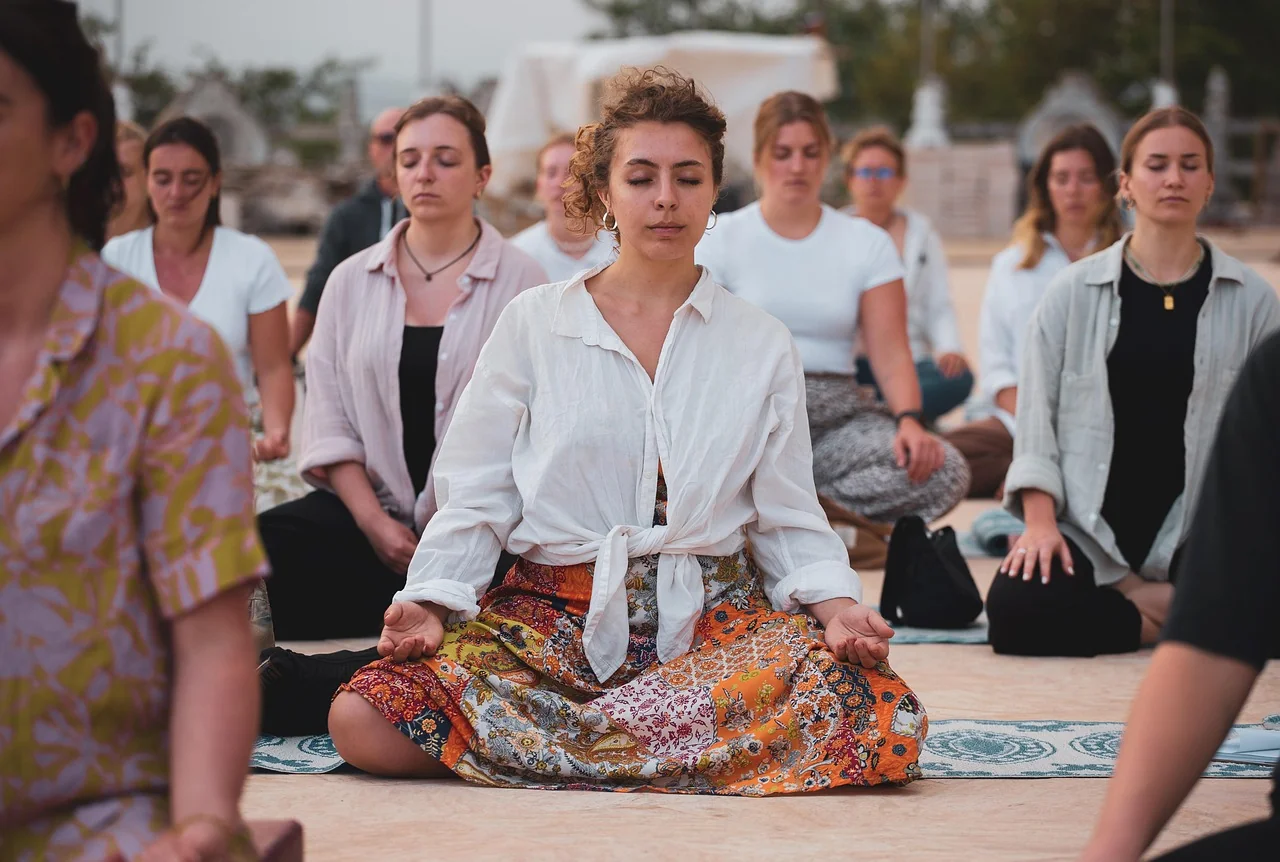Feeling overwhelmed, stressed, or like your mind is constantly buzzing? You’re not alone, and the powerful tool you need for more calm and clarity is already within you. The best part? You can learn how to meditate for free, right where you are, without any special equipment or a hefty price tag. Many people assume meditation is complicated, expensive, or requires sitting in an uncomfortable position for hours, but that’s simply not true. This ancient practice is incredibly accessible, and its benefits—like reduced anxiety, improved focus, and better sleep—are available to everyone, starting today.
This guide is your first step. We’ve stripped away the mystery and cost to give you a straightforward, beginner-friendly path. You’ll discover simple meditation techniques you can try immediately, understand how to navigate a wandering mind (it happens to everyone!), and get a curated list of the best free resources to support your journey. Let’s begin.
Why Learn to Meditate? The Life-Changing Benefits
Before diving into the "how," it helps to understand the "why." Meditation is like a workout for your mind, and the benefits extend far beyond the few minutes you spend in practice. Consistent meditation for beginners can lead to profound changes in your daily life.
The science is clear. Just a few minutes of daily practice can:
- Reduce Stress and Anxiety: Meditation dials down your body's stress response, lowering cortisol levels and helping you feel more grounded during challenging moments. For a practice specifically designed for mental wellness, explore our guide on how to meditate for depression and anxiety.
- Improve Focus and Concentration: By training your mind to return to a single point of focus (like your breath), you strengthen your ability to concentrate on tasks off the cushion.
- Enhance Self-Awareness: Mindfulness meditation encourages you to observe your thoughts without judgment. This creates space between you and your reactions, allowing for more thoughtful responses.
- Promote Better Sleep: A quiet mind is a restful mind. Meditation can help calm the mental chatter that often keeps people awake at night.
- Increase Patience and Tolerance: As you become more aware of your own internal states, you naturally develop more compassion and patience for yourself and others.
How to Start Meditating: A Beginner's Foundation
Starting a meditation practice is much simpler than people think. You don't need a perfect, silent room or hours of free time. The goal is not to "clear your mind," but to become gently aware of it.
Here are the foundational steps for how to start meditating today.
Find Your Posture and Space
You can meditate anywhere, but for your first sessions, find a relatively quiet spot. Sit in a chair with your back straight and feet flat on the floor, or cross-legged on a cushion. The key is to be comfortable and alert. You can even lie down, though there's a higher chance of falling asleep.
Start With a Small Time Goal
Begin with just 3 to 5 minutes. Setting a small, achievable goal prevents frustration and makes it easier to build a consistent habit. You can use a timer on your phone, but set it to a gentle sound.
Focus on Your Breath
Close your eyes or soften your gaze. Bring your attention to your natural breath. Don't try to control it; just feel the sensation of the air moving in and out of your body. Notice the rise and fall of your chest or abdomen. This focus on the breath is your anchor.
Gently Handle a Wandering Mind
Your mind will wander. This is not a sign of failure; it is the entire point of the practice. The moment you realize your attention has drifted to a thought, sound, or bodily sensation, simply acknowledge it without judgment and gently guide your focus back to your breath. This act of noticing and returning is the repetition that builds your mental muscle. If you're looking for more detailed guidance on this process, our article on how to actually meditate breaks it down perfectly.
5 Free Meditation Techniques You Can Try Today
Once you're comfortable with the basics of breath awareness, you can explore different meditation techniques. Trying various styles can keep your practice fresh and help you discover what resonates most with you. For a deeper look at different approaches, check out our piece on the best way to learn how to meditate.
Mindfulness of Breath
This is the cornerstone of most meditation practices. As described above, you simply use the physical sensation of your breath as the sole object of your attention. Whenever your mind wanders, you gently return to the next inhale or exhale.
Body Scan Meditation
This technique involves systematically moving your awareness through different parts of your body. Start at the tips of your toes, noticing any sensations—tingling, warmth, pressure, or nothing at all. Slowly move your attention up through your feet, legs, torso, arms, hands, neck, and head. It’s a powerful way to release physical tension and connect with your body.
Loving-Kindness Meditation
Also known as Metta, this practice focuses on cultivating feelings of goodwill and compassion. You start by directing kind wishes toward yourself ("May I be happy. May I be healthy."). Then, you gradually extend these wishes to a loved one, a neutral person, someone you find difficult, and finally, to all beings everywhere.
Walking Meditation
If sitting still is challenging, try meditation in motion. Find a quiet path about 10-20 paces long. Walk slowly and deliberately, focusing all your attention on the physical experience of walking. Feel the lift of your foot, the movement through the air, and the placement of your foot back on the ground.
Mantra Meditation
A mantra is a word or sound used as a point of focus. You can use a traditional Sanskrit word like "Om" or a simple English word like "peace" or "calm." Silently repeat your chosen mantra in your mind with each breath. This gives your thinking mind a simple task to focus on.
Top Free Resources to Guide Your Practice
You don't have to meditate alone. A wealth of high-quality, free meditation resources is available at your fingertips. These apps and platforms offer excellent guided meditation sessions, which are perfect for meditation for beginners.
- Healthy Minds Program: This app is built on a scientific framework and offers a complete, structured journey through the fundamentals of meditation, all completely free.
- Insight Timer: This is the world's largest free library of meditations. It features thousands of guided meditations on every topic imaginable, along with a simple and customizable timer for your unguided sessions.
- UCLA Mindful Awareness Research Center: UCLA offers a collection of free, downloadable guided meditations in both English and Spanish, led by experienced teachers.
- Smiling Mind: A completely free, non-profit app designed for all ages, with programs tailored for adults, kids, and classrooms.
- YouTube: A simple search for "guided meditation for beginners" or "5-minute meditation" will yield countless videos from qualified teachers and mindfulness experts.
Embarking on a meditation practice is a profound yet accessible journey, one that is now more available than ever without financial barriers. This guide has illuminated the path, from establishing a simple daily routine and finding a comfortable posture to exploring a wealth of free resources like apps, online videos, and local community groups. The core message remains clear: the tools for cultivating mindfulness and inner peace are within your grasp, requiring only your time and intention. Do not be discouraged by a wandering mind; this is part of the process. Consistency matters far more than perfection. Begin with just a few minutes each day, using the techniques outlined, and observe the subtle shifts in your awareness and stress levels. You possess everything you need to start this transformative practice today. Take that first mindful breath, and embark on the rewarding path to a calmer, more centered you.


